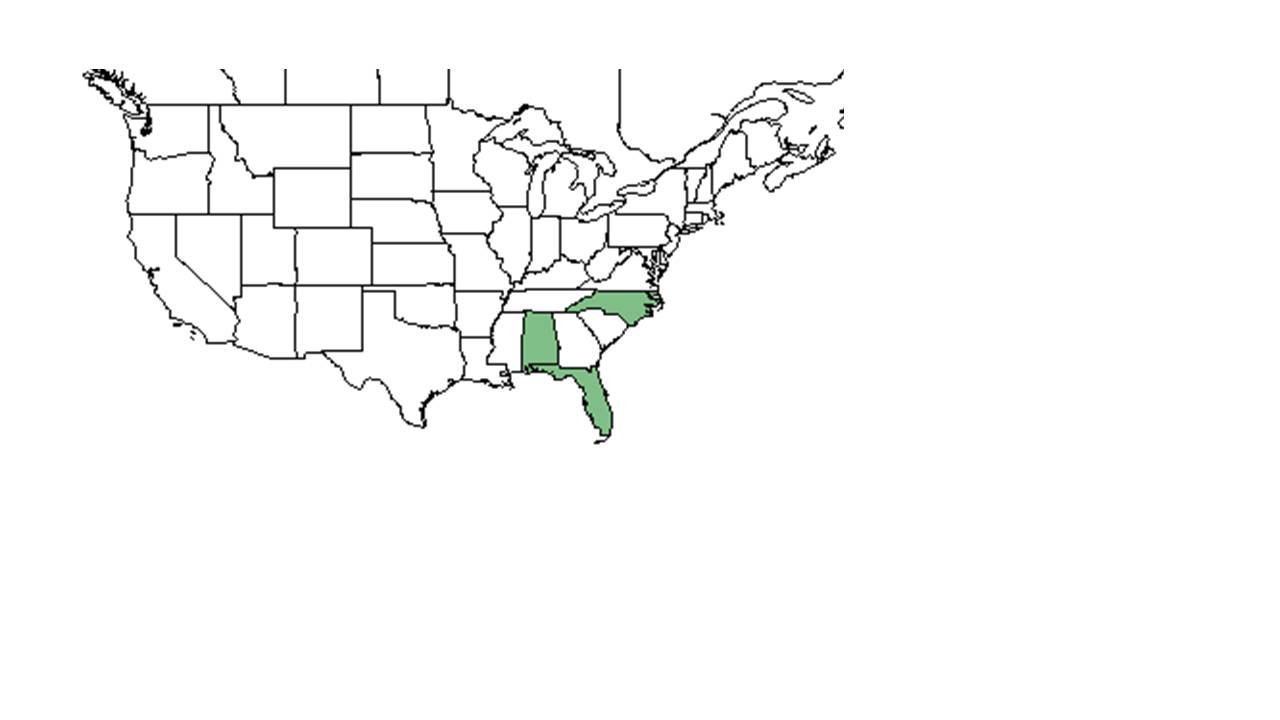Difference between revisions of "Andropogon arctatus"
KatieMccoy (talk | contribs) |
|||
| Line 30: | Line 30: | ||
===Habitat=== <!--Natural communities, human disturbed habitats, topography, hydrology, soils, light, fire regime requirements for removal of competition, etc.--> | ===Habitat=== <!--Natural communities, human disturbed habitats, topography, hydrology, soils, light, fire regime requirements for removal of competition, etc.--> | ||
It is found in moist, sunny, low grass-sedge clearings and open pine flatwood and savanna communities.<ref name="Kral et al 1983"/>. It is found in dry to wet loamy sands and sand pine scrub environments (Wunderlin and Hansen 2003, FSU Herbarium). | It is found in moist, sunny, low grass-sedge clearings and open pine flatwood and savanna communities.<ref name="Kral et al 1983"/>. It is found in dry to wet loamy sands and sand pine scrub environments (Wunderlin and Hansen 2003, FSU Herbarium). | ||
| + | |||
| + | Associated species include slash pine, longleaf pine, wiregrass; ''Hypericum chapmanii, Ilex myrtifolia'', and others. | ||
===Phenology=== <!--Timing off flowering, fruiting, seed dispersal, and environmental triggers. Cite PanFlora website if appropriate: http://www.gilnelson.com/PanFlora/ --> | ===Phenology=== <!--Timing off flowering, fruiting, seed dispersal, and environmental triggers. Cite PanFlora website if appropriate: http://www.gilnelson.com/PanFlora/ --> | ||
Revision as of 19:23, 15 October 2015
| Andropogon arctatus | |
|---|---|
Error creating thumbnail: Unable to save thumbnail to destination
| |
| Scientific classification | |
| Kingdom: | Plantae |
| Division: | Magnoliophyta - Flowering plants |
| Class: | Liliopsida – Monocotyledons |
| Order: | Cyperales |
| Family: | Poaceae ⁄ Gramineae |
| Genus: | Andropogon |
| Species: | A. arctatus |
| Binomial name | |
| Andropogon arctatus Chapm. | |

| |
| Natural range of Andropogon arctatus from USDA NRCS Plants Database. | |
Common names: Pinewoods Bluestem
Contents
Taxonomic notes
Description
It is a perennial (Hall 1978). This species grows scattered throughout the habitat but is very abundant (FSU Herbarium).
Distribution
It is occasionally found in northern and central peninsula of Florida; central and western panhandle (Wunderlin and Hansen 2003).
Ecology
Habitat
It is found in moist, sunny, low grass-sedge clearings and open pine flatwood and savanna communities.[1]. It is found in dry to wet loamy sands and sand pine scrub environments (Wunderlin and Hansen 2003, FSU Herbarium).
Associated species include slash pine, longleaf pine, wiregrass; Hypericum chapmanii, Ilex myrtifolia, and others.
Phenology
It flowers from late September to frost.[1] It has been observed fruiting from October through November (FSU Herbarium).
Seed dispersal
Seed bank and germination
Fire ecology
It is maintained by fire. [1] flowers in fall only after fire the same year.annjohnson[2]
Pollination
Use by animals
Diseases and parasites
Conservation and Management
Cultivation and restoration
Photo Gallery
References and notes
Florida State University Robert K. Godfrey Herbarium database. URL: http://herbarium.bio.fsu.edu. Last accessed: June 2014. Collectors: Robert K. Godfrey, Ann F. Johnson, Debbie White, Loran C. Anderson, A. F. Clewell, Christopher Campbell, Angus Gholson, Dennis Hardin, and Ann F. Johnson. States and Counties: Florida: Franklin, Liberty, Jackson, Gulf, Bay, Leon, and Calhoun. Georgia: Liberty.
Hall, David Walter. The Grasses of Florida. 1978. University of Florida – Dissertation. 442. Print.
Wunderlin, Richard P. and Bruce F. Hansen. Guide to the Vascular Plants of Florida. Second edition. 2003. University Press of Florida: Gainesville/Tallahassee/Tampa/Boca Raton/Pensacola/Orlando/Miami/Jacksonville/Ft. Myers. 177. Print.